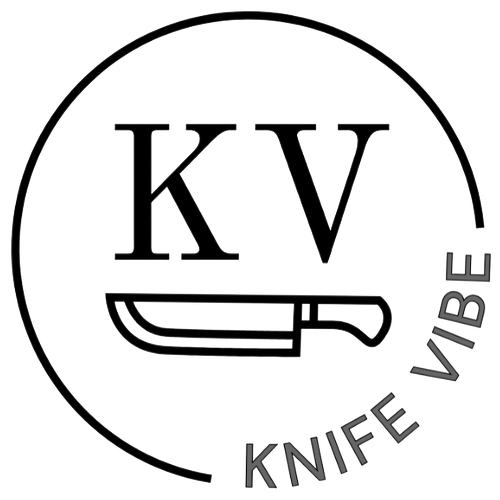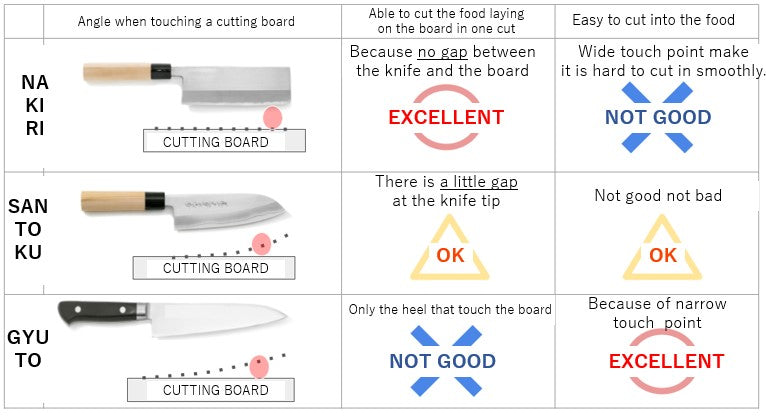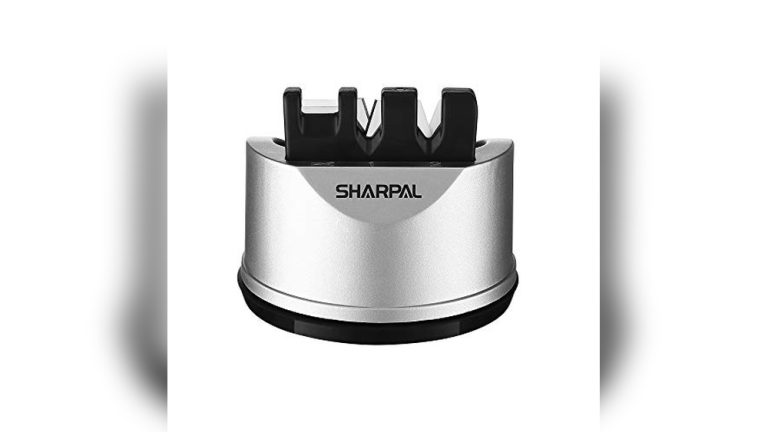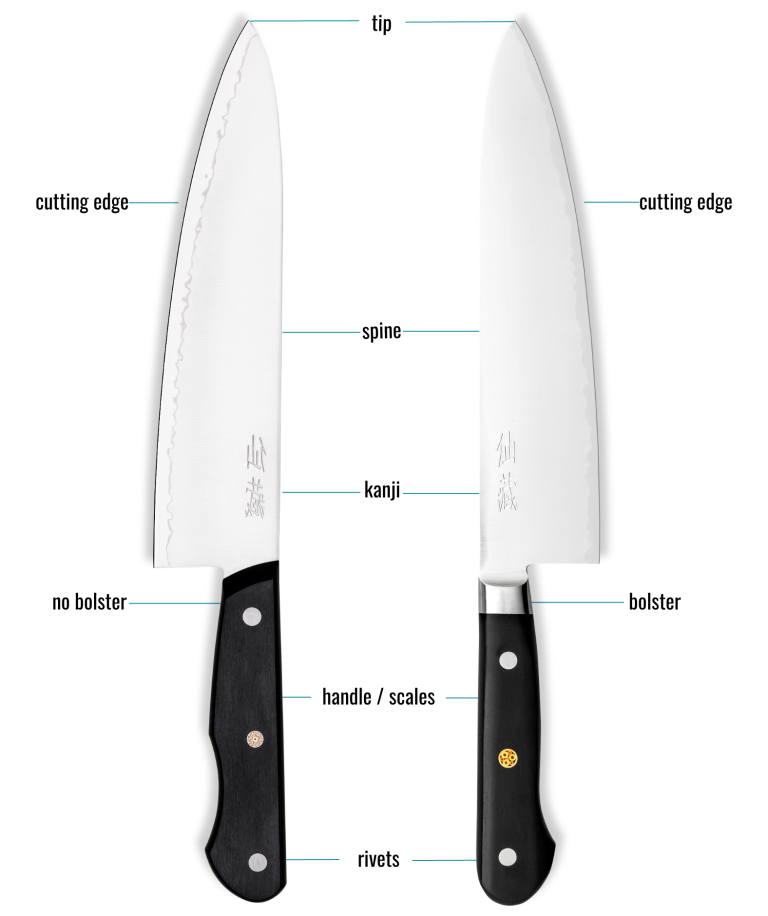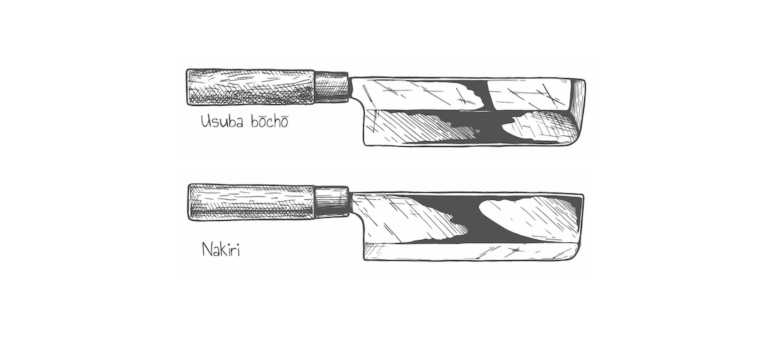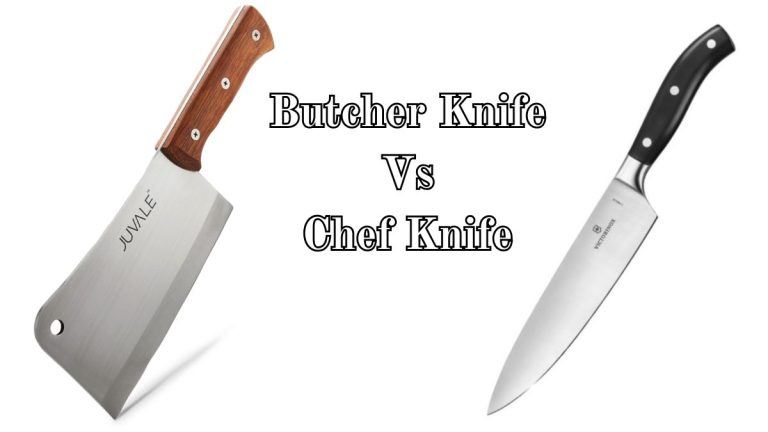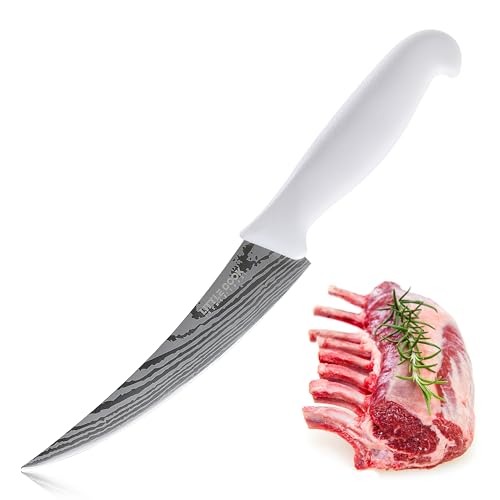Nakiri Knife Vs Santoku Knife: The Ultimate Chef’s Choice
Choosing the right kitchen knife can be tricky. Nakiri and Santoku knives are two popular options.
Both knives offer unique advantages. The Nakiri knife excels at chopping vegetables. Meanwhile, the Santoku knife is known for its versatility. Comparing these knives helps you pick the best one for your needs. Understanding their differences can improve your cooking experience.
In this blog, we’ll explore the key features of each knife. We will also discuss their best uses in the kitchen. Whether you’re a home cook or a professional chef, knowing the strengths of each knife can enhance your culinary skills. Stay with us to learn which knife suits your cooking style better.
Introduction To Nakiri And Santoku Knives
When it comes to Japanese kitchen knives, the Nakiri and Santoku stand out. These knives have unique characteristics that make them ideal for different tasks. Both are popular choices among chefs and home cooks. They offer precision and efficiency in food preparation.
Brief History
The Nakiri knife has a long history in Japan. It originated during the Edo period. This knife was designed for slicing vegetables. Its straight blade makes it easy to cut through produce.
The Santoku knife, on the other hand, is relatively modern. It emerged in the mid-20th century. It was created to be versatile. Santoku means “three virtues,” referring to slicing, dicing, and mincing.
Cultural Significance
The Nakiri knife holds great cultural value in Japan. It is often used in traditional Japanese cooking. Many families pass Nakiri knives down through generations. It symbolizes the importance of vegetables in Japanese cuisine.
The Santoku knife also has cultural significance. It represents the innovation in Japanese cutlery. Its design combines the features of a Western chef’s knife and a Japanese knife. This blend makes it a favorite in modern kitchens worldwide.
Design And Structure
Choosing the right knife for your kitchen can be tricky. The Nakiri knife and the Santoku knife each have unique designs and structures. Understanding these differences can help you make an informed decision.
Blade Shape
The Nakiri knife has a straight, rectangular blade. This shape is perfect for chopping vegetables. The flat edge ensures that the entire blade makes contact with the cutting board. This design offers precise cuts with minimal effort.
On the other hand, the Santoku knife features a more rounded blade. It has a slight curve, which allows for a rocking motion. This makes it versatile for slicing, dicing, and mincing. The Santoku’s blade often has Granton edges (small scallops). These prevent food from sticking, enhancing efficiency.
Handle Design
Handle design plays a crucial role in comfort and control. The Nakiri knife usually has a traditional, straight handle. These are often made from wood or composite materials. The design allows for a firm grip, ensuring stability during chopping.
The Santoku knife often features an ergonomic handle. These are designed to fit the natural curve of your hand. They provide better control and comfort, especially during prolonged use. Handles can be made from various materials, including wood, plastic, and stainless steel.
Below is a table summarizing the key differences:
| Aspect | Nakiri Knife | Santoku Knife |
|---|---|---|
| Blade Shape | Straight, rectangular | Rounded, slight curve |
| Special Features | Flat edge for contact | Granton edges |
| Handle Design | Straight, traditional | Ergonomic, curved |
| Materials | Wood, composite | Wood, plastic, stainless steel |
Material Composition
Understanding the material composition of Nakiri and Santoku knives is crucial. It directly affects their performance, durability, and maintenance. Let’s dive into the specifics of the materials used for blades and handles.
Blade Materials
Nakiri knives often use high-carbon stainless steel. This material offers excellent sharpness and edge retention. Some Nakiri blades are made of traditional carbon steel. These require more maintenance but offer a sharper edge. On the other hand, Santoku knives usually feature stainless steel blades. This makes them more resistant to rust and staining. Some Santoku knives are also made with high-carbon stainless steel, balancing sharpness and durability.
Handle Materials
Nakiri knife handles often feature wood or pakkawood. Wood handles provide a comfortable grip and a traditional look. Pakkawood is a resin-impregnated wood composite. It combines the beauty of wood with increased durability and water resistance. Santoku knife handles vary from wood to plastic and stainless steel. Wooden handles offer a natural feel, while plastic handles are more resistant to moisture. Stainless steel handles provide a modern look and easy cleaning. Each material impacts the knife’s balance and comfort during use.

Credit: www.youtube.com
Performance And Usage
The Nakiri knife and the Santoku knife are both Japanese kitchen knives that offer unique benefits. Understanding their performance and usage can help you choose the right one for your needs. This section delves into how these knives handle cutting techniques and their versatility in the kitchen.
Cutting Techniques
The Nakiri knife is designed for chopping vegetables. Its straight blade allows for clean, straight cuts. This makes it perfect for dicing, slicing, and mincing. The flat edge also ensures that you can cut all the way to the cutting board without rocking the knife.
In contrast, the Santoku knife has a slight curve to its blade. This allows for a rocking motion, which is excellent for chopping herbs and slicing meats. The Santoku’s granton edge, which has small indentations, helps to prevent food from sticking to the blade. This feature is particularly useful when slicing sticky foods like cucumbers or cheese.
Versatility In The Kitchen
The Nakiri knife excels in vegetable preparation. Its wide blade can also be used to scoop up chopped items and transfer them to a pot or pan. This makes it highly efficient for tasks that involve a lot of vegetable cutting.
The Santoku knife is more versatile and can handle a variety of tasks. It is suitable for slicing, dicing, and mincing a wide range of foods, including vegetables, meats, and fish. The Santoku can be your go-to knife for most kitchen tasks, making it a valuable addition to any kitchen.
| Feature | Nakiri Knife | Santoku Knife |
|---|---|---|
| Blade Design | Straight | Slight Curve |
| Best For | Vegetables | Various Foods |
| Cutting Technique | Chopping | Rocking Motion |
| Additional Features | Wide Blade | Granton Edge |
Advantages Of Nakiri Knives
The Nakiri knife, a traditional Japanese kitchen tool, is beloved by many chefs. It offers unique benefits that make it a must-have for vegetable preparation. Let’s dive into the advantages of Nakiri knives.
Precision Cutting
The Nakiri knife is known for its precision cutting. Its straight edge allows for clean, straight cuts. This is perfect for creating uniform slices. The flat blade design ensures that you can cut through vegetables without the need for a rocking motion. This makes it ideal for detailed work.
The blade is thin and sharp. This ensures minimal damage to delicate vegetables. The precision of the Nakiri knife reduces waste, and you get the most out of your ingredients.
Vegetable Preparation
For vegetable preparation, the Nakiri knife is unparalleled. Its design is specifically for cutting vegetables. The flat edge ensures that you can chop with speed and efficiency. This saves time in the kitchen.
The Nakiri knife is also lightweight. This makes it easy to handle. The ergonomic design reduces hand fatigue during long prep sessions. You can cut large quantities of vegetables without discomfort.
Additionally, the Nakiri knife is versatile. It can handle a variety of vegetables. From leafy greens to root vegetables, it delivers consistent results. This versatility makes it a valuable tool in any kitchen.
Comparison Table: Nakiri Knife Vs Santoku Knife
| Feature | Nakiri Knife | Santoku Knife |
|---|---|---|
| Blade Design | Straight Edge | Curved Edge |
| Best For | Vegetable Cutting | General Use |
| Ease of Use | High | Medium |
| Weight | Lightweight | Medium Weight |
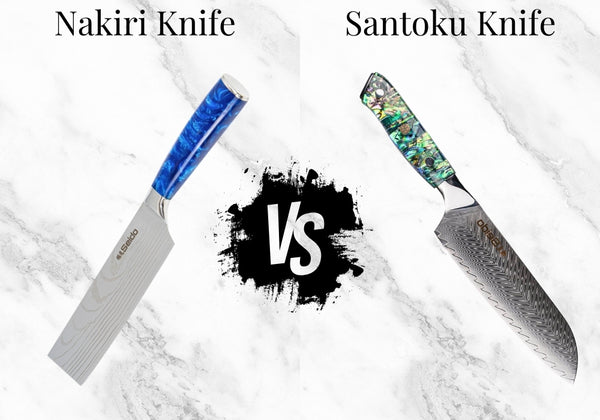
Credit: seidoknives.com
Advantages Of Santoku Knives
The Santoku knife is a versatile kitchen tool. It combines functionality and ease of use, making it a favorite for many home cooks. This section highlights the key advantages of using a Santoku knife.
All-purpose Use
The Santoku knife excels in all-purpose use. It can handle various tasks like slicing, dicing, and chopping. The wide blade makes it easy to scoop up and transfer ingredients. You can use it to cut vegetables, meat, and fish with ease. Its design allows for precise cuts, ensuring uniform pieces every time. This versatility saves time and makes cooking more efficient.
Ease Of Handling
Santoku knives offer excellent ease of handling. They are generally lighter than other knives. The balance between the blade and handle is well-designed. This makes it easier to control and maneuver. The ergonomic handle provides a comfortable grip. This reduces hand fatigue during extended use. Even beginners find it easy to use a Santoku knife. Its design minimizes the learning curve.
Comparative Analysis
When choosing between a Nakiri knife and a Santoku knife, it’s important to understand their similarities and differences. Both knives have roots in Japanese culinary traditions. They are designed for specific tasks and excel in their unique ways. This comparative analysis will help you decide which knife suits your cooking needs best.
Similarities
The Nakiri and Santoku knives share several common features. Both knives have straight edges, which help in precise cutting. They are made from high-quality steel, ensuring durability and sharpness. Both knives are lightweight, making them easy to handle. Their ergonomic handles provide a comfortable grip, reducing strain during prolonged use.
Differences
Despite their similarities, the Nakiri and Santoku knives have distinct differences. The Nakiri knife has a rectangular shape and is best for chopping vegetables. Its flat blade ensures full contact with the cutting board, providing clean cuts. The Santoku knife, on the other hand, has a more rounded tip. It is versatile and can handle vegetables, meat, and fish. The Santoku’s blade often features a granton edge, which reduces food sticking to the blade.
Another key difference lies in their blade lengths. The Nakiri usually has a longer blade, typically around 6-7 inches. The Santoku knife is generally shorter, around 5-7 inches. This difference in length affects the control and precision of each knife. The Nakiri’s longer blade offers more leverage, while the Santoku’s shorter blade allows for finer control.
Choosing The Right Knife
Choosing the right knife can make a big difference in the kitchen. Both Nakiri and Santoku knives are popular choices. Each has unique features and benefits.
Chef’s Preferences
Many chefs have a favorite knife type. Some prefer the straight edge of the Nakiri. It is great for chopping vegetables. Others enjoy the versatility of the Santoku. Its design allows for slicing, dicing, and mincing. Personal comfort also plays a role. The handle and balance of the knife matter. Trying both types can help you decide which feels better.
Specific Culinary Needs
Consider what you cook most often. The Nakiri knife excels in cutting vegetables. Its flat edge ensures full contact with the board. This results in clean, precise cuts. It is especially useful for thin slicing. The Santoku knife is more versatile. It can handle a variety of tasks. Meat, fish, and vegetables are all within its range. Its scalloped edge reduces sticking. This makes it easier to cut through different foods.
Maintenance And Care
Taking care of your Nakiri or Santoku knife ensures it lasts longer. Good maintenance practices keep the blades sharp and effective. This section will cover essential aspects of maintaining these knives.
Sharpening Techniques
Sharpening your Nakiri and Santoku knives is crucial. Use a whetstone for the best results. Soak the whetstone in water for at least 10 minutes. Place it on a stable surface. Hold the knife at a 15-degree angle to the stone. Move the blade back and forth across the stone. Repeat this process on both sides.
Check the sharpness by slicing through paper. If it cuts smoothly, the knife is sharp enough. For a finer edge, use a honing rod. Hold the rod vertically and draw the blade down from base to tip. Do this on both sides several times.
Proper Storage
Proper storage of your knives helps maintain their condition. Never store them loosely in a drawer. This can damage the blade. Use a knife block or a magnetic strip. Both options keep the knives secure and easily accessible.
Another option is a blade guard. These covers protect the blade when stored. Always ensure the knives are dry before storing. Moisture can lead to rust. Keeping knives in a dry place extends their lifespan.

Credit: hasuseizo.com
Frequently Asked Questions
What Is A Nakiri Knife Used For?
A Nakiri knife is used for chopping vegetables. Its straight blade allows precise cuts. It’s ideal for julienning and dicing.
What Makes A Santoku Knife Unique?
A Santoku knife has a versatile design. It’s perfect for slicing, dicing, and chopping. Its scalloped edge reduces food sticking.
Which Knife Is Better For Vegetables?
The Nakiri knife is better for vegetables. Its flat edge makes clean, consistent cuts. It’s designed specifically for vegetable preparation.
Can A Santoku Knife Handle Meat?
Yes, a Santoku knife can handle meat. It’s versatile and suitable for slicing, dicing, and mincing meat.
Conclusion
Choosing between a Nakiri and Santoku knife depends on your cooking style. Both knives offer unique benefits. The Nakiri excels at chopping vegetables with precision. The Santoku is versatile, handling meats, fish, and veggies well. Think about what you cook most often.
Match the knife to your needs. Either choice will enhance your kitchen experience. Both knives are great additions to any kitchen. Consider what fits best for you. Happy cooking!
